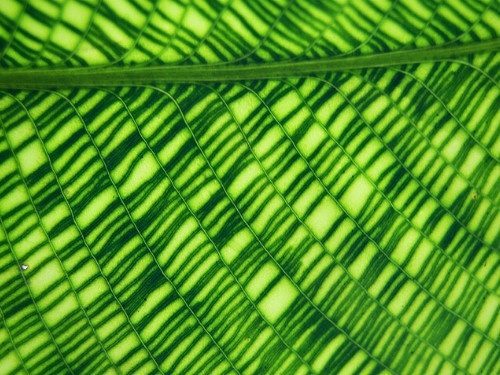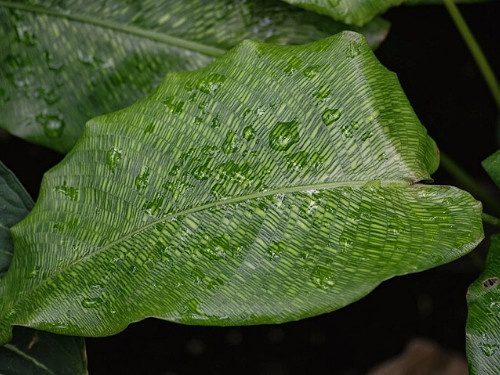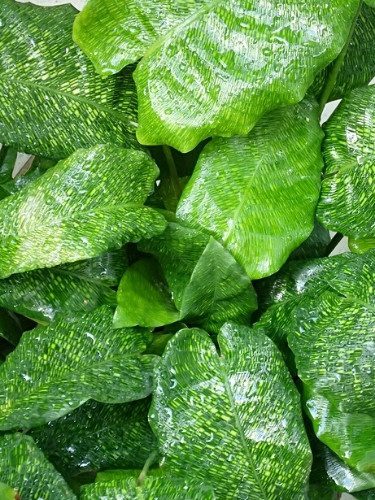The calathea musaica (Goeppertia kegeljanii) is a perennial, rhizomatous, photophilic (light-seeking), and ornamental plant with distinctive foliage reminiscent of an intricate mosaic. It’s native to the Atlantic Forest in Brazil and reaches a height of about 18 inches (45 cm). The leaves are light green, oval, slightly wavy, glossy, leathery, and feature a pattern of subdivided veins, creating yellow and green segments, giving it a mosaic appearance. When exposed to light, the leaves shimmer according to the pattern of the designs. The inflorescences are cymose and appear in the spring, directly from the rhizome, on short stems with delicate white flowers, resembling porcelain. They hold secondary ornamental value and remain for about a week.

With its attractive foliage, the calathea musaica is perfect for indoor environments, in pots and planters that adorn everything from living rooms to winter gardens. You can plant it on its own to highlight its unique foliage or combine it with other plants that contrast with its textured and striped green tones. It’s ideal for bringing sophistication and exclusivity to spaces, as its marked leaves set it apart from the species commonly used in these areas.
Moreover, the playful designs on the leaves and their movement throughout the day in response to light can capture children’s interest. In the garden, use it in mass plantings, borders, or even as ground cover under trees, as long as it’s protected from direct sunlight. This makes it a colorful and intriguing option for shaded areas, where flowering plants are challenging to grow. Utilize it in vertical garden projects as a standout plant, making the space even more luxurious.
It has slow growth, though it’s considered faster compared to other species in the Marantaceae family. Maintenance is straightforward and involves removing yellow and dry leaves, cleaning the foliage, and fertilizing. A clean, damp cloth, or even a light shower with cold water, is enough to remove dust from the leaves. Repot every 2 or 3 years in early spring, being careful not to harm the plant and its roots. This is also an opportunity to renew the substrate and check for pests in the root system. If necessary, lightly prune the roots.

It should be grown under filtered light, preferably near east or south-facing windows, as direct sunlight can cause leaf burns. If the light is insufficient, your calathea musaica will show clear signs: its leaves will have less vibrant colors and the mosaic pattern will be less pronounced. On the other hand, excessive light can lead to leaf curling. Overall, it’s easy to grow, preferring fertile, fibrous, well-draining substrates rich in organic matter. The substrate composition should be balanced, possibly consisting of two parts potting soil and one part mineral material to aid drainage, such as a mix of sand and perlite.
The calathea musaica prefers relative humidity between 60% and 80%. Indoors, you can group it with other plants or use an electric humidifier to maintain proper humidity levels. It doesn’t tolerate frost and should be kept within a temperature range of 65 to 86°F. Water regularly, ensuring that the substrate doesn’t dry out between waterings, keeping it moist but never waterlogged.
It’s crucial to water the calathea musaica with distilled, filtered, or rainwater, as this species, like other Marantaceae plants, is sensitive to compounds present in tap or mineral water, such as fluoride and chlorine. Using tap water can cause leaf margins to burn. Fertilize during spring and summer, preferably with slow-release or organic fertilizers, following the manufacturer’s recommendations. Propagate the calathea musaica by dividing the rhizome, maintaining each division with leaves, rhizome, and roots, during the spring and summer.


